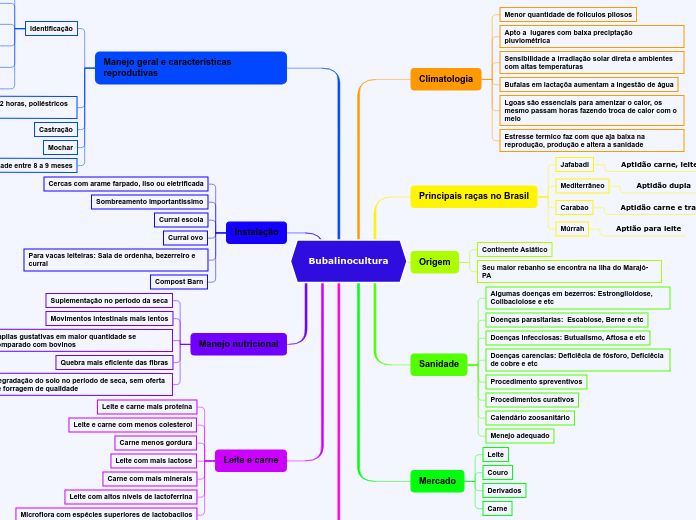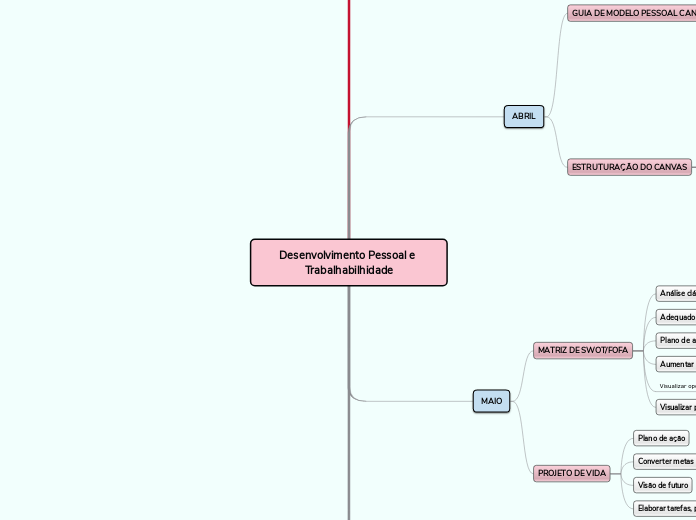Bubalinocultura
The part of speech is a category to which a word is assigned according to its syntactic functions. In English the main parts of speech are noun, pronoun, adjective, determiner, verb, adverb, preposition, conjunction, and interjection.
Variáveis que implicam na qualidade da carne
A conjunction is a word like 'if' 'but' or 'and' which is used to connect sentences or clauses together.
Fatores Extrínsecos
Subordinating conjunctions are conjunctions that are used at the beginning of subordinate clauses. Some examples of these conjunctions are: although, after, before, because, how, if, once, since, so that, until, unless, when etc.
Fatores Intrínsecos
Coordinating conjunctions always connect phrases, words, and clauses. They are: for, and, nor, but, or, yet, so.
Leite e carne
A preposition is one of the most exciting parts of grammar. A preposition is used to describe the location of something in relation to something else.
MIcroflora com espécies superiores de lactobacilos
Leite com altos níveis de lactoferrina
Carne com mais minerais
A group of words used with the force of a single preposition is called phrase preposition.
Leite com mais lactose
Participle preposition consists of words that end in “ing”.
Carne menos gordura
When a preposition consists of more than one word, it is called double preposition.
Leite e carne com menos colesterol
Compound preposition consists of two or more words.
Leite e carne mais proteína
When a preposition consists of one word it is called single or simple preposition.
Manejo nutricional
An interjection is used to express emotion in a sentence.
Think of other interjections!
Degradação do solo no período de seca, sem oferta de forragem de qualidade
Quebra mais eficiente das fibras
Papilas gustativas em maior quantidade se comparado com bovinos
Movimentos intestinais mais lentos
Suplementação no período da seca
Instalação
An adverb is used to describe a verb, but it can also describe an adjective or another adverb.
Adverbs normally help paint a fuller picture by describing how something happens.
Compost Barn
Para vacas leiteiras: Sala de ordenha, bezerreiro e curral
Curral ovo
The intensifiers strengthen adverbs adjectives and adverbs and down- toners make them weaker.
Curral escola
Sombreamento importantissimo
Cercas com arame farpado, liso ou eletrificada
Manejo geral e características reprodutivas
A numeral is a word or phrase that describes a numerical quantity.
Some theories of grammar use the word 'numeral' to refer to cardinal numbers that act as a determiner to specify the quantity of a noun, for example the 'two' in 'two hats'.
Macho purbedade entre 8 a 9 meses
Mochar
Castração
Cio em vacas dura entre 12 a 32 horas, poliéstricos sazonais
Identificação
Tatuagem
Marcação a fogo
Microchip injetável
Bolus intra-ruminal
Brinco
Eletrônica
Mercado
An article is a word used to modify a noun, which is a person, place, object, or idea. Technically, an article is an adjective, which is any word that modifies a noun.
Carne
Indefinite articles are the words 'a' and 'an.' Each of these articles is used to refer to a noun, but the noun being referred to is not a specific person, place, object, or idea. It can be any noun from a group of nouns.
Derivados
Couro
Leite
It refers directly to a specific noun or groups of nouns.
Sanidade
A pronoun is a word that can be used in place of a noun, typically after the noun itself has already been stated.
Menejo adequado
Unlike demonstrative pronouns, which point out specific items, indefinite pronouns are used for non-specific things. This is the largest group of pronouns. All, some, any, several, anyone, nobody, each, both, few, either, none, one, and no one are the most common.
Calendário zoosanitário
Interrogative pronouns are used in questions. Although they are classified as pronouns, it is not easy to see how they replace nouns. Who, which, what, where, and how are all interrogative pronouns.
Procedimentos curativos
Reciprocal pronouns are used for actions or feelings that are reciprocated. The reciprocal pronouns are each other and one another.
Procedimento spreventivos
A reflexive pronoun ends with ...self or ...selves and refers to another noun or pronoun in the sentence (usually the subject of the sentence). The reflexive pronouns are myself, yourself, herself, himself, itself, ourselves, yourselves, and themselves.
Doenças carencias: Deficiêcia de fósforo, Deficiêcia de cobre e etc
Demonstrative pronouns are used to demonstrate (or indicate). This, that, these, and those are all demonstrative pronouns.
Doenças infecciosas: Butualismo, Aftosa e etc
Doenças parasitarias: Escabiose, Berne e etc
Possessive pronouns are used to show possession. The possessive pronouns are mine, yours, his, hers, ours, and theirs.
Algumas doenças em bezerros: Estrongiloidose, Colibaciolose e etc
The personal pronouns are I, you, he, she, it, we, they. More often than not (but certainly not always), they replace nouns representing people.
Origem
An adjective is a word that's used to describe a specific noun and to provide more detail to the listener.
Seu maior rebanho se encontra na Ilha do Marajó-PA
Superlative adjectives demonstrate a higher level of comparison between entities.
Continente Asiático
Expresses a comparison between two entities or groups of entities in quality or degree.
Principais raças no Brasil
A noun is defined as a person, place, thing or idea. Proper nouns always begin with a capital letter. Common nouns, which are general words, such as 'cars,' are not capitalized.
Múrrah
Compound nouns are words where two nouns have been stuck together to make a new noun. Compound nouns should be written as one word, without a hyphen.
Aptião para leite
Carabao
A noun which refers to a group of things/people.
Aptidão carne e trabalho
Mediterrâneo
Countable nouns are nouns that can be counted, even if the number might be extraordinarily high.
Uncountable nouns are nouns that come in a state or quantity which is impossible to count; liquids are uncountable, as are things which act
like liquids.
Aptidão dupla
Jafabadi
Proper nouns are the names of specific people or places. They should always begin with a capital letter.
Aptidão carne, leite e trabalho
Climatologia
A verb is an action word or 'doing' word that signifies movement in some way.
Estresse termico faz com que aja baixa na reprodução, produção e altera a sanidade
Lgoas são essenciais para amenizar o calor, os mesmo passam horas fazendo troca de calor com o meio
An auxiliary verb helps the main (full) verb and is also called a 'helping verb.' With auxiliary verbs, you can write sentences in different tenses, moods, or voices.
Bufalas em lactaçõa aumentam a ingestão de água
A participle is a verb form that can be used as an adjective or to create a verb tense. There are two types of participles: Present participle (ending -ing) and Past participle (usually ending -ed, -d, -t, -en, or -n).
Sensibilidade a irradiação solar direta e ambientes com altas temperaturas
A modal is a type of auxiliary (helping) verb that is used to express: ability, possibility, permission or obligation. The main modal verbs in the English language are: can, could, may, might, must, shall, should, will, would.
Apto a lugares com baixa preciptação pluviométrica
A linking verb connects the subject with a word that gives information about the subject, such as a condition or relationship.
Menor quantidade de foliculos pilosos
A verb with its own meaning: a verb that is not an auxiliary verb.









